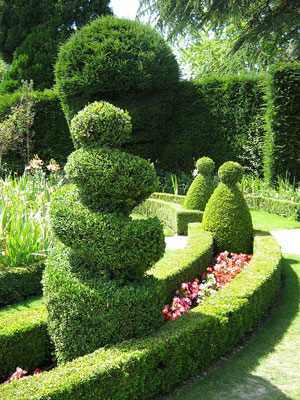Artificial turf … it’s the grass that’s always greener
Story: Catherine Stewart, FAILDM, MHMA
Mowing, fertilising, watering, mowing, applying soil wetter, mowing, pest control, edging, weeding, de-thatching, patching and mowing. Maintaining a good looking lawn can be a lot of time, effort and greenhouse gas and even then it’s not always a success.
If you want a soft play or sitting area and are looking for an alternative to the traditional lawn, artificial grass may be the answer. Made from either polypropylene or polyethylene tufts bonded onto a base matting (rather like a carpet) artificial grass today looks remarkably real, with many having two colours and either pre-fibrillated yarn or additional fine tufting to give them both the look and feel of real grass. The more durable grass products have more layers in their base matting (up to three) and pile heights vary between 25-50mm.
Requiring little more than an occasional sweep or hose down, you will be free of mowing, fertilising, pest control, watering, weeding and edging. But there are some other benefits. Your mower will no longer be polluting the air with its noise and carbon emissions and your lawn grass will no longer be seeding or spreading into your garden beds. Artificial grass will stay green throughout the longest drought, during the toughest water restrictions and in the heaviest shade. Children or pets who might suffer allergies to some lawn grasses will not react to artificial turf.
However, artificial lawn is not really a more eco-friendly alternative than real lawn, as both consume resources but in different ways. Real grass uses up water, its nutrient enriched runoff can damage river ecosystems and mowing it creates greenhouse gases and noise pollution. Artificial grass has costs too, such as the energy needed for its manufacture and transport and how you eventually dispose of it.
Check also whether an artificial lawn will be an impermeable surface, reducing ground water penetration and increasing runoff and heatload. Some artificial grasses are laid over concrete or paving and do not allow water through while others have a perforated backing and either a permeable substrate such as crusher dust or a membrane that catches the water and directs it to a storage tank.
Artificial turf does have some design and use drawbacks. Like hard surfaces such as paving, on a hot, sunny day artificial grass can be hot to walk on. It’s not suitable for slopes as the infill material could wash away and it probably won’t cope with heavy duty wear such as occasional car parking. Some might still look a bit plastic under reflective night light and they won’t provide any habitat for insects, which in turn are food for many of our native birds, spiders and lizards.
However, there are many situations where artificial turf is a winner. In small gardens where a real lawn would be a ridiculous maintenance load, as an alternative to paving, around pools, in heavy shade where real grass could never grow (especially under solid awnings), for paving stones set into lawn and where pets are constantly digging up the grass, artificial grass is well worth considering.
To choose your artificial grass, determine the likely wear and tear, whether it’s to be played on (check the grass has Low Slide Resistance to avoid friction burn), sat on or just looked at, how much sun it will get, where and how it drains and what maintenance might be necessary, such as topping up the infill material. Products come with anything from a five to a 10 year warranty but many manufacturers believe their grass will last 20 years.
If you’re a handy type of person, you can lay the turf yourself with the manufacturer’s comprehensive instructions. The grass is spread out like carpet over compacted crushed rock and cut to shape, joins are taped and then fine sand or rubber crumbs are swept into the pile to give the grass weight and cushioning and keep the pile upright. Supply only is about $35-$50m2 with installation doubling that cost.
When choosing artificial grass, look for a reputable supplier and a long warranty. Also look for something that feels ‘non-plastic’, is springy to the touch, drains well and has a natural lush look. Weaves and blade lengths will depend on the look you are trying to achieve.







